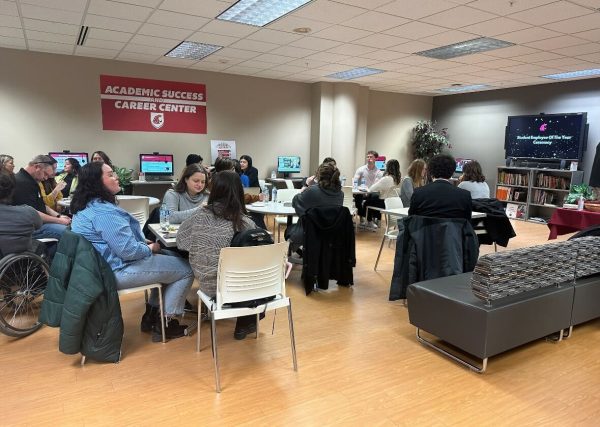Tipping the scales against a bovine disease
February 7, 2014
A WSU professor is working to slow down a disease that kills more than 1 million cattle every year and reduces the quality of beef sold.
Genetics Professor Holly Neibergs has been leading research for three years to find ways to save cattle from bovine respiratory disease, also known as shipping fever. Bovine respiratory disease is the most common infectious disease in cattle. So far, the study has involved 28 researchers, eight institutions, and 4,000 cattle.
The problem of bovine respiratory disease is even bigger than the 1.1 million cattle that die every year. Only 10 percent of cows that get sick die; many more animals contract the disease, Neibergs said. The disease has negative impacts on the quality of beef obtained from the cows, which is still sold.
Specifically, Neibergs is using genetics to figure out why some cows are more likely to get the disease than others. Cattle breeders can utilize this information to breed cows that are less susceptible to the disease, and genetically less susceptible cows require less medical treatment.
“What it means for the animals is they are going to be happier because they are less sick,” Neibergs said. “That will make consumers happy as well, because we don’t like to have multiple drug resistances on antibiotics.”
The research also has economic implications because sick cows are worth considerably less than healthy cows.
The study showed the loss of value on average was between $150 and $160 per cow, economics professor Shannon Neibergs said.
The quality of beef derived from sick cows was also surprisingly low.
“Going into the study we thought the quality grade would drop from Choice to Select, and that would be the economic cost,” Shannon Neibergs said. “But they weren’t dropping down to Select, they were dropping down to Standard. It’s not a little loss in quality; it’s a big loss in quality.”
The research is groundbreaking in its use of new technology.
Veterinary medicine professor Thomas Besser said although people breed cattle for physical traits all the time, the ability to measure genetic traits in this way is a new phenomenon.
Ultimately, the research can be implemented to save the lives and improve the values of many cows, which is serious business. However, the researchers still have a sense of humor about the whole thing.
“DNA gives us all our potential, and we either build or destroy it from there,” Holly Neibergs said, “but it just looks like boogers.”





















